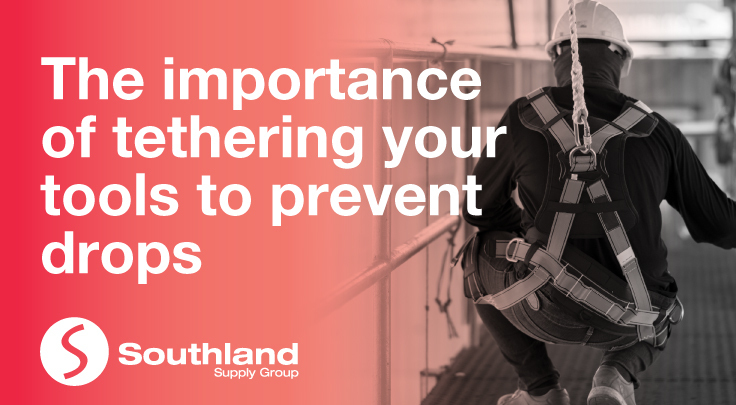
Tethering tools is a preventative method of ensuring that tools are not at risk of falling or being dropped when working at heights.
“Working at height” is classified as working in any place where, without precautions, a person could fall a distance liable to cause personal injury.
With that being said, preventing tools and equipment from being dropped from heights is crucial, with falling objects the fourth highest cause of workplace fatalities in Australia from 2012–2016, resulting to 122 deaths in five years.
Falling objects are also responsible for a substantial number of workplace injuries, resulting in 3,515 compensation claims in 2014–15 alone.
Tool Tethering
A tool tether is an attachment point, for instance, a D Ring that allows the tool to be secured with a tool cord to an anchor point. An anchor point can be a work belt, harness or part of the structure that’s being worked on.
There are three main considerations when tethering tools:
- The tether point
- Tool lanyards that connect the anchor and tether point
- The anchor point
As with any fall protection safety measure, providing a miscalculated tool safety solution may lead to higher risks. Hence, we provide you a couple of things to keep in mind when selecting tool tethering methods for your worksite:
- Identify the tools and equipment used on the job site, which of them are used at what height and which ones pose a potential fall hazard.
- The weight of the tool determines what kind of tethering tools and anchor points can be used. This means that tools that weigh more than 2 kg should, generally, not be tied off to a person, but rather to the structure.
- If tying off tools to you or the building is not an option, take care to install collective fall protection measures such as toe boards.
- The tethering tools should not limit the use of the tool, otherwise, the tether will be an obstruction and nuisance to the worker, which will make it tempting to not secure the tool.
- Lastly, you will need to know if tools need to be passed off to other workers, this influences the connector options. For instance, if tools need to be passed off frequently you should work with carabiners. Additionally, passing on tools should be done safely, preferably while standing still in a safe zone, and by never handing tools across an open structure.
ANSI standards to ensure maximum safety:
There are currently no standards in Australia for tool lanyards, but one of Southland’s key suppliers LINQ, have adopted the new American National Standards Institute (ANSI) standard as a baseline for products.
The ANSI/ISEA 121-2018 standard includes design, testing, performance, and labelling requirements for tool tethering systems.
Using this standard, LINQ tethering products are rated based on their safe working load.
Southland Supply Group
Our product range provides highly innovative, functional and cost-effective solutions for tethering your existing hand tools along with providing tool lanyards, purpose-tethered tools and many other products and accessories related to dropped object prevention. For a complete range of safety products, visit our website at https://www.southland.com.au/
